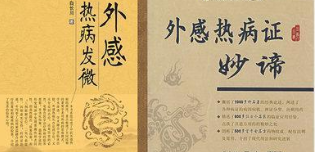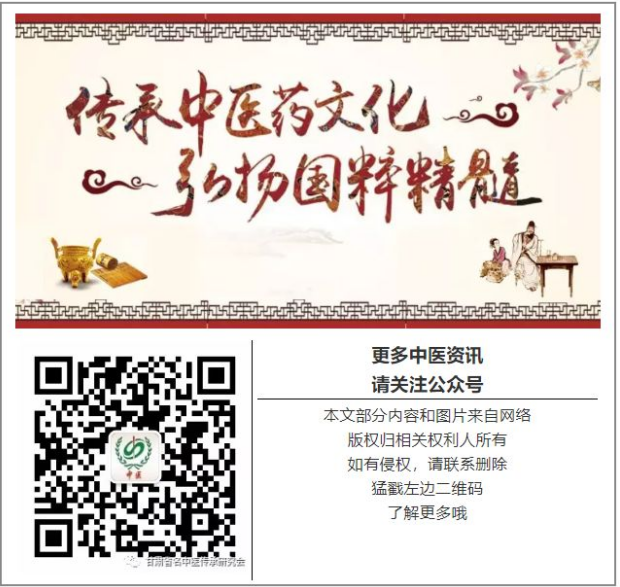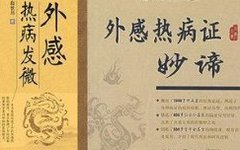
External heat illness refers to a category of diseases characterized by fever as the main symptom, caused by external pathogens invading the body. In modern medicine, these diseases are primarily classified as acute infectious diseases, including those caused by bacteria or viruses that present with fever as a primary symptom.
Traditional Chinese Medicine (TCM) believes that external heat illness is a process where the body’s righteous qi contends fiercely with the warm heat pathogens. Through syndrome differentiation, the treatment aims to expel the pathogens and support the righteous qi, ultimately leading to the righteous qi gradually overcoming the pathogens and curing the heat illness. During this process, the pathogens can damage the righteous qi, inevitably causing varying degrees of damage to the organs, tissues, and dysfunction of the meridians, qi, blood, and body fluids. Therefore, during the specific stage of initial recovery from heat illness, timely adjustments and repairs should be made, employing various measures to ensure complete recovery and restoration.
The “Neijing: Discussion on Heat” discusses in detail the causes of heat illness, classification of symptoms, development patterns, major treatment methods, contraindications, and prognosis. Subsequently, the “Shanghan School” and “Wenbing School” emerged, gradually accumulating rich experience in the prevention and treatment of external heat illness during academic debates, while also placing great emphasis on post-recovery conditioning (rehabilitative medical care during the recovery phase). For example, the “Neijing: Discussion on Heat” states, “After heat illness has recovered, there are often residual effects; observe the deficiency and excess, and adjust accordingly”; the “Shanghan Lun” includes a special section on “Differentiating Yin and Yang in Post-Illness Recovery”; and the “Wenre Jingwei: Discussion on Epidemic Syndromes” describes the treatment principles and experiences for post-recovery of external heat illness.
Case 1
Shen, male, 12 years old, student, first diagnosed on August 2, 1988. The patient was admitted with the main complaint of “sudden fever (body temperature 39.2℃), headache, accompanied by vomiting for 2 days.” After admission, he subsequently experienced convulsions, confusion, and rapid breathing, diagnosed as severe epidemic type B encephalitis. Physical examination: body temperature 38.6℃, respiration 22 breaths/min, blood pressure 150/110 mmHg, confusion, facial cyanosis, pupils equal and reactive to light, neck stiffness, lungs (-), heart rate 110 beats/min, regular rhythm, no murmurs heard, liver and spleen not palpable, abdominal reflex absent, cremasteric reflex not elicited, Kernig’s sign positive, tongue bright red, yellow greasy coating. Blood test: white blood cells 12×10^9/L, neutrophils 80%. Cerebrospinal fluid examination: white blood cells 300/mm3.
Syndrome differentiation: summer heat illness, qi and nutrient levels both scorched.
Treatment principle: clear qi and cool the nutrient levels.
Prescription: Clear Qi and Cool Nutrient Injection (ingredients: Da Qing Ye (Isatis Leaf), Shi Gao (Gypsum), Zhi Mu (Anemarrhena), Yin Hua (Honeysuckle), Da Huang (Rhubarb), Ya Zhi Cao (Duckweed), Chi Shao (Red Peony), Bai Mao Gen (White Grass Root)), 30ml each time, twice daily, intravenous drip, while also administering western medicine for fluid replacement and symptomatic treatment for respiratory failure and dehydration. Two hours after medication, slight sweating occurred on the forehead, body temperature gradually decreased, and after 32 hours, the temperature returned to normal, followed by clarity of consciousness, able to take fluids. After 5 days, symptoms basically disappeared, neck soft, limbs moved freely, neurological examination (-), recheck blood routine showed white blood cells 7.6×10^9/L, neutrophils 70%, after nourishing with Qing Shu Yi Qi Decoction for 1 week, discharged on August 18.
Comment: Although viral high fever follows the general pattern of warm illness affecting the defensive qi, nutrient levels, and blood, its pathological center lies in the qi and nutrient levels. Therefore, the treatment of viral infectious high fever should focus on clearing qi and cooling the nutrient levels. In this case, the patient was diagnosed with summer heat affecting both qi and nutrient levels, and the treatment should clear qi and cool the nutrient levels to block the further invasion of pathogens. In the later stage, Qing Shu Yi Qi Decoction was used for recovery. The Clear Qi and Cool Nutrient Injection, administered intravenously, led to sweating and reduction of heat. The ingredients such as Da Qing Ye clear heat and detoxify, Yin Hua clears the heat from the qi level, Shi Gao and Zhi Mu clear heat and drain fire while nourishing yin, Da Huang drains fire, detoxifies, cools blood, and resolves stasis, Ya Zhi Cao clears heat and transforms dampness, Chi Shao cools blood and resolves stasis, Bai Mao Gen clears heat, generates fluids, diuretic, and removes dampness. The combination of these herbs effectively clears qi, drains heat, cools the nutrient levels, and detoxifies, achieving good clinical results.
Case 2
Wang, male, 44 years old, first diagnosed on July 1, 2003. The patient had suffered from viral encephalitis a year prior, treated at a local hospital, during which he experienced high fever and convulsions, and took medication to prevent epilepsy, resulting in partial memory loss, inability to return home alone, and failure to recognize old classmates and friends. He often felt irritable, had poor appetite, slightly loose stools, and urinated about twice daily. Tongue was purple with tooth marks on the edges, thin yellow coating, pulse was thin and slippery. Ultrasound showed mild hydronephrosis on the right kidney. Professor Zhou Zhongying diagnosed the condition as deficiency of both qi and yin, internal phlegm and stasis, and lack of nourishment to the clear orifices, treating with tonifying qi and nourishing yin, transforming phlegm and eliminating stasis. Prescription: Ge Gen (Kudzu Root) 15g, Tai Zi Shen (Pseudostellaria) 10g, Mai Dong (Ophiopogon) 10g, Chao Yu Zhu (Fleeceflower Root) 10g, Dan Shen (Salvia) 15g, Yu Jin (Curcuma) 10g, Shi Chang Pu (Acorus) 10g, Zhi Yuan Zhi (Polygala) 5g, Lian Zi Xin (Lotus Seed Heart) 30g, Gui Ban (Tortoise Shell, pre-boiled) 12g, Zhi Mu (Anemarrhena) 10g. 60 doses. For dry mouth, add Sheng Di (Rehmannia) and Shi Hu (Dendrobium); for irritability, add Bai He (Lily) and Long Chi (Dragon’s Tooth); for poor sleep, add He Huan Pi (Mimosa) and Chao Suan Zao Ren (Sour Jujube Seed).
二诊(2003年9月28日):患者服药2个月,记忆力有明显改善,已能认识旧友,外出亦能自行返家,但尚未完全恢复,近事善忘,情绪稳定,食纳良好,寐安,二便调,苔薄黄,质暗红,脉细弦。周仲瑛继以此方出入加减调理2月余后,患者基本恢复正常。
Comment: This case is a patient with sequelae of viral encephalitis. Although there were no fever symptoms at the time of consultation, the main symptoms were forgetfulness and memory decline. However, the physician must recognize the source of the disease. Professor Zhou believed that the primary disease was viral encephalitis, with high fever and convulsions during the acute phase, which must have consumed qi and yin, leading to deficiency of both qi and yin, insufficient kidney essence, and lack of nourishment to the brain marrow, with phlegm and stasis obstructing the orifices, resulting in a deficiency-excess pattern. During the recovery phase, the yin fluids were difficult to restore, hence the patient exhibited dry mouth and irritability. According to the principle of “treating the symptoms urgently and the root cause gradually,” Professor Zhou Zhongying treated the root cause with tonifying qi and nourishing yin, while also transforming phlegm and eliminating stasis, calming the mind and treating the symptoms, addressing both root and branch. The selected formula included Tai Zi Shen, Mai Dong, Bai He Di Huang Tang, and Bai He Zhi Mu Tang to tonify qi and nourish yin, replenish kidney essence, and calm the mind; Yuan Zhi, Ban Xia, and Shi Chang Pu to transform phlegm and open the orifices; Dan Shen and Yu Jin to invigorate blood and resolve stasis; Chao Suan Zao Ren and Lian Zi Xin to nourish the heart and calm the mind. The combination of herbs matched the disease and symptoms, thus achieving significant therapeutic effects.
Case 3
Xu, male, 60 years old. Presented with “fever, headache, and low back pain for 6 days, and decreased urination for 4 days” as the main complaint, admitted on December 27, 1989. Six days prior, he suddenly developed chills and fever, headache, low back pain, generalized pain, frequent nausea, vomiting, and reduced appetite. Currently: persistent fever, thirst, irritability, distension and dull pain in the lower abdomen, no bowel movement for 2 days, significantly reduced urine output, with hematuria, 24-hour urine output approximately 80-100ml. Examination: body temperature 37.5℃, pulse 110 beats/min, respiration 26 breaths/min, blood pressure 120/80 mmHg, lethargic, clear consciousness, red eyes, flushed face, cyanosis of lips, oral mucosa with petechiae, heart rate 86 beats/min, regular rhythm, lungs (-), abdomen soft, no tenderness, bilateral renal area with tenderness, percussion pain (+++), tongue bright red, yellow dry coating, pulse thin and rapid. Laboratory tests: white blood cells 17200/mm3, neutrophils 71%, lymphocytes 13%, atypical lymphocytes 16%, hemoglobin 13.5g/dl, platelets 30000/mm3, blood urea nitrogen 90mg/dl, creatinine 14mg/dl.
Diagnosis: (stasis heat with water accumulation, heat obstructing fluids) epidemic hemorrhagic fever (known in Western medicine as epidemic hemorrhagic fever during the oliguria phase).
Treatment principle: purge and eliminate stasis, clear heat and promote diuresis.
Prescription: Tao Ren Cheng Qi Decoction, Zeng Ye Decoction with modifications.
Ingredients: Sheng Da Huang (Raw Rhubarb) 30g (added later), Mang Xiao (Mirabilite) 10g, Chao Zhi Shi (Stir-fried Bitter Orange) 15g, Tao Ren (Peach Kernel) 10g, Dan Pi (Moutan Bark) 10g, Sheng Di (Rehmannia) 10g, Mai Dong (Ophiopogon) 10g, Zhu Ling (Polyporus) 15g, Fu Ling (Poria) 15g, Zhi Mu (Anemarrhena) 10g, Bai Mao Gen (White Grass Root) 15g, Xuan Shen (Scrophularia) 10g, Chi Shao (Red Peony) 10g, Che Qian Zi (Plantago Seed) 15g (wrapped), Gan Cao Shao (Licorice) 6g, Ze Xie (Alisma) 15g. 2 doses.
二诊(1989年12月29日):药后当晚大便1次,小便2次,每次约100ml,昨日大便3次,小便总量为800ml,身热已退,小腹胀、腹痛、呃逆消失,唯有纳谷不香,口渴心烦,精神萎靡,目红,面部、颈胸部潮红,口腔黏膜及腋下部有出血点,两侧肾区触痛(+),叩击痛(++),舌质红绛,苔黄燥干无津。化验:白细胞12000/mm3,中性74%,淋巴23%,异型淋巴细胞3%,血红蛋白14g/dl,血小板60000/mm3,血尿素氮70mg/dl,血肌酐7mg/dl。治以泻下通瘀、滋阴利水法。方药如下:生大黄20g(后下),芒硝10g,炒枳实15g,桃仁10g,丹皮10g,生地15g,麦冬10g,猪苓15g,阿胶10g(烊化),茯苓15g,白茅根15g,芦根15g,玄参10g,赤芍10g,车前子15g(包),川石斛10g,泽泻15g。2剂。
三诊(1989年12月31日):昨日24小时尿量1100ml,血性尿膜消失,大便3次。刻下:疲劳乏力,口渴,纳差,舌质红绛,苔黄燥少津,脉细数。治以滋阴生津利水法,猪苓汤加减。方药如下:猪苓15g,阿胶10g(烊化),生地10g,麦冬10g,玄参10g,茯苓15g,白茅根15g,泽泻15g,丹皮10g,赤芍10g,芦根15g,六一散10g(包),川石斛10g,玉竹10g,天花粉15g,北沙参10g。3剂。
四诊(1990年1月3日):昨日24小时尿量1600ml,大便日行1次。刻下:疲劳乏力,口渴,腰痛,腰酸,目干涩,胃纳略增,舌质红,苔薄黄,脉细数。复查血常规、尿常规、肾功能均恢复正常。病已越过多尿期进入恢复期。肝肾阴虚,拟以滋养调补。方药如下:生地10g,熟地10g,山萸肉10g,茯苓15g,丹皮10g,制首乌10g,枸杞子10g,川石斛10g,炙女贞子10g,旱莲草15g,怀牛膝10g,泽泻15g,赤芍10g,炒六曲10g。5剂。
于1990年1月16日治愈出院。
Comment: Heat toxins enter the nutrient levels, heat and blood collide, leading to blood heat and stasis, with stasis heat accumulating in the Yangming channel, causing blood to accumulate in the lower jiao, resulting in water retention and impaired kidney function. Additionally, warm pathogens easily damage yin, leading to fluid depletion in the intestines, hence constipation. Heat entering the lower jiao consumes kidney yin, leading to decreased urine output or retention. Therefore, the treatment involved purging and eliminating stasis, nourishing yin, and promoting diuresis. By purging, heat is released from within, and the stasis heat in the lower jiao is cleared, thus improving kidney function. Nourishing yin not only increases fluids but also assists the kidneys in fluid metabolism, facilitating urination and preserving yin and fluids. The combination of purging and nourishing methods provides comprehensive effects, thus stabilizing the patient’s condition.
Case 4
Yuan, male, 30 years old. Admitted on November 16, 1993, for the first diagnosis. Complained of sudden chills and fever for 2 days starting November 12, followed by high fever, headache, orbital pain, low back pain, generalized pain, accompanied by nausea, vomiting, poor appetite, thirst, and constipation, with no bowel movement for 2 days. Examination: body temperature 39.7℃, pulse 100 beats/min, respiration 22 breaths/min, blood pressure 50/30 mmHg, lethargic, dull consciousness, red eyes, flushed face and neck, oral mucosa with reticular petechiae, scattered petechiae in the axillary and back areas, heart rate 100 beats/min, regular rhythm, no murmurs heard, abdomen soft with slight tenderness, bilateral renal area with tenderness (+), percussion pain (++), lower limbs without petechiae, tongue bright red, yellow coating, pulse thin and rapid. Laboratory tests: white blood cells 5.6×10^9/L, neutrophils 68%, lymphocytes 22%, atypical lymphocytes 10%, red blood cells 5.6×10^12/L, hemoglobin 150g/L, platelets 4.9×10^9/L, blood urea nitrogen 35mg/dl, creatinine 6mg/dl. Urinalysis: protein (+++), red blood cells (++), casts 3/HP, hematuria.
Diagnosis: (qi and nutrient levels both scorched, internal heat toxin) epidemic hemorrhagic fever (known in Western medicine as epidemic hemorrhagic fever during the febrile and hypotensive phase).
Treatment principle: clear qi, cool the nutrient levels, and promote qi circulation.
Prescription: Qing Wen Bai Du Decoction, Si Ni San with modifications.
Blood pressure continued to drop to 30/20 mmHg, subsequently, an anti-shock injection (composed of Zhi Shi, Shan Yu Rou, and Dan Shen) 60ml was added to 500ml of 5% glucose sodium chloride injection (GNS), rapidly infused. After 30 minutes, blood pressure rose to 60/40 mmHg. Continued intravenous infusion was adjusted to 50 drops per minute, and Qing Wen oral liquid (composed of Da Qing Ye, Sheng Shi Gao, Yin Hua, Ye Ju Hua, Da Huang, Zhi Mu, Chi Shao, etc.) was administered at 10ml, 4 times daily. One hour after oral medication, blood pressure rose to 80/60 mmHg, body temperature 39.2℃, and after 2 hours, blood pressure was 90/60 mmHg, body temperature 38.9℃, and one bowel movement occurred. After 4 hours of medication, blood pressure reached 100/60 mmHg, body temperature 38.8℃, and one bowel movement occurred, followed by the use of anti-shock injection 60ml added to 500ml of 5% GNS, slowly infused. After 8 hours, one bowel movement occurred, body temperature 38.2℃, blood pressure 110/70 mmHg, and the anti-shock injection was subsequently discontinued.
二诊(1993年11月17日),三诊(1993年11月19日,第8病日),患者病情持续转好。
四诊(1993年11月21日,第10病日):腰膝酸软无力,头晕口干,舌质红,苔薄黄,脉细,24小时尿量1600ml,大便日行2次,复査血常规、尿常规、肾功能均正常,越过少尿期、多尿期进入恢复期。患者于1993年1月26日治愈出院。
Comment: This case presents a condition of excessive heat toxin in the qi level, penetrating into the nutrient level, with symptoms indicating a scorched qi and nutrient levels. Internal dryness and heat obstruct the intestines, leading to fluid depletion. The internal heat toxin penetrates deeply, causing severe yang qi stagnation, which cannot express outward, resulting in qi stagnation and blood stasis. Therefore, the treatment involved clearing qi, draining heat, cooling the nutrient levels, and promoting qi circulation, while also supporting the righteous qi and stabilizing the patient. The Qing Wen oral liquid has a clearing and detoxifying effect, controlling viral blood syndrome, leading to a reduction in heat. The anti-shock injection promotes qi circulation, invigorates blood, and opens the meridians, assisting in the recovery of blood pressure. The combination of supportive and stabilizing treatments protects cellular structure and function, facilitating recovery, thus allowing the patient to transition through the oliguria and polyuria phases, shortening the course of the disease.
This article is sourced from China Medicine Network (China Traditional Chinese Medicine Report, page 5)(This article is excerpted from “Zhou Zhongying’s Treatment of Epidemic Hemorrhagic Fever”)
Note: The various prescriptions, formulas, and treatment methods mentioned in this article are for reference and study by professional TCM practitioners only and should not be used as prescriptions. Please do not use them blindly, as this platform does not bear any responsibility for any consequences arising from such use.


